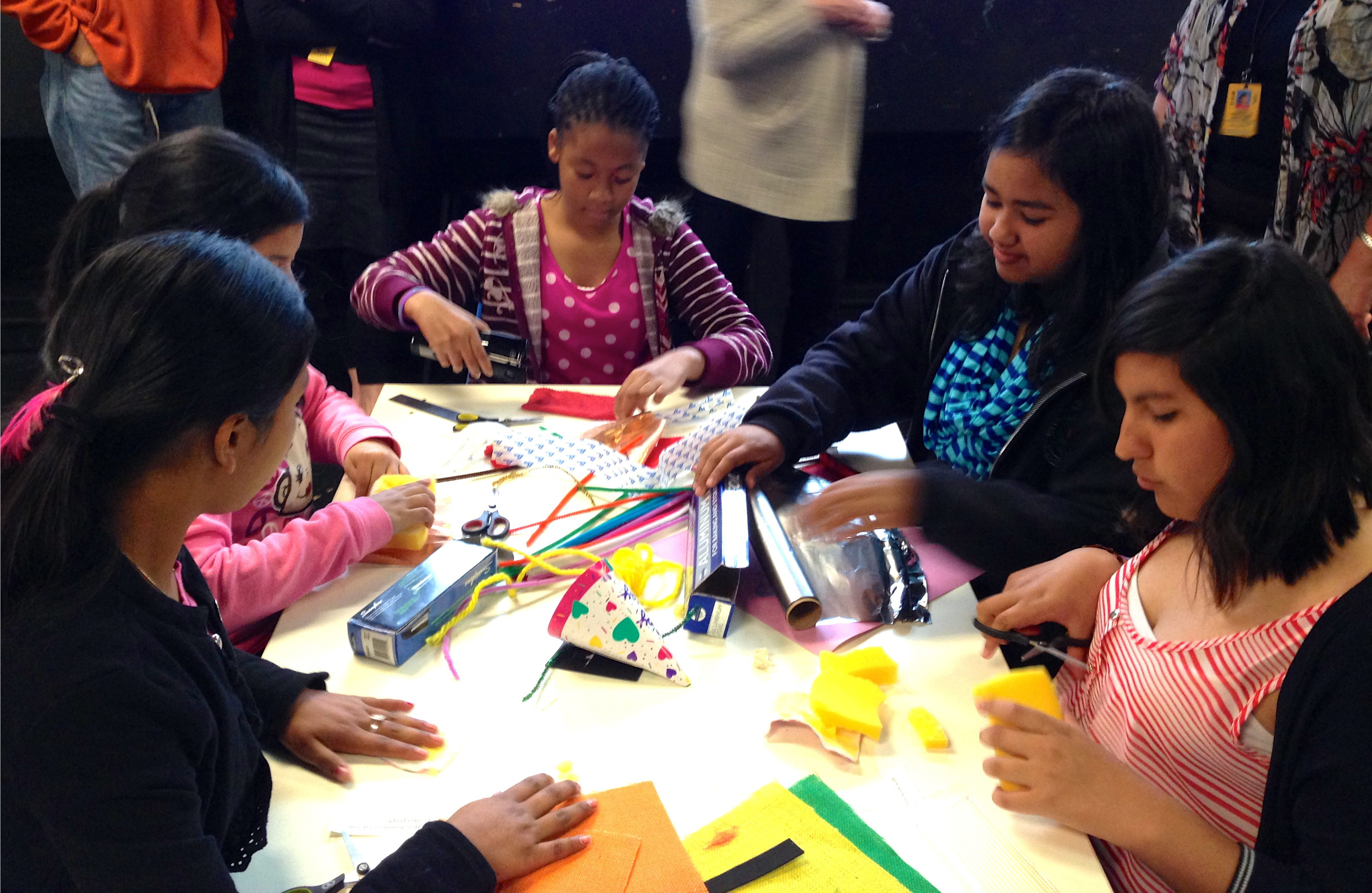

For the vast majority of students, the first hands-on encounter with design and engineering comes in a university classroom. Shelley Goldman thinks that's about six years too late.
Goldman, a professor (teaching) in the Graduate School of Education, sees her research into design concepts for middle-school students as a race against time, alienation and diminishing chances. "I want to reach them before the system lessens their access and opportunities," she said. "I want that spark to be lit before they get too old."
Four years ago, Goldman created REDlab, or Research in Education & Design Lab, a partnership between the GSE and the Hasso Plattner Institute of Design, also know as the d.school. Since then, she and faculty from the GSE and the School of Engineering, supported by funding from the National Science Foundation, have worked with local middle schools to develop an interdisciplinary STEM-based curriculum for design thinking.
"Dive In!" — a package of design challenges and activities focused on delivering clean water — is the project's first complete curriculum, which was released on the Web earlier this month and is available now for free for all to download. On April 18 the project's faculty, researchers and students celebrated the milestone with a launch party, in the GSE’s CERAS building.
According to Goldman, the project's approach and goals are in stark contrast to the status quo in classroom STEM education: The real-world design challenges are open-ended and stress collaboration and creativity, rather than the rote memorization of facts, rules and formulas. "We are going against the grain (given the current emphasis on standardization, accountability and assessment), but I don't think that will be the case ultimately," said Goldman, the project's principal investigator. (Co-PIs are engineering professors Bernard Roth and Sheri Sheppard, associate vice provost for graduate education and professor of mechanical engineering. GSE lecturer Maureen Carroll heads the curriculum development effort.)
The Next Generation Science Standards, which were unveiled this month, could bolster the case for project-based STEM instruction. "The new standards have a strong focus on climate change. And I think if you're going to start teaching kids about global issues like climate, water and energy that you're going to take the opportunity to also have them design some solutions," said Goldman. "I don't think it's that far a step." The new standards were developed by the National Research Council, the National Science Teachers Association, the American Association for the Advancement of Science, and Achieve, in partnership with 26 states.
One of the natural byproducts of engaging global design challenges such as water, energy and shelter is the development of empathy, Goldman said. "Students need to learn that they can make positive contributions. The ability to develop empathy is so crucial for kids — to be able to get outside themselves and think about other people and their needs."
For example, a recent first-day exercise in one of the program's weeklong design camps involved a Stanford student who played the role of a ninja warrior. (Dozens of Stanford students, both graduate and undergraduate, are involved in the program.) In the span of 90 minutes, the middle school students interviewed him, made a needs assessment and developed rough prototypes of items to support him, including an insulated purse, suction-cup gloves and a wearable heater.
At this stage, the design thinking initiative exists outside regular classroom STEM instruction. "I hate to say it, but (schools) have left many of the compelling things that kids find engaging to afterschool and supplemental programs," said Goldman. The research and curriculum development currently takes place at three venues: a weeklong camp at Bayside STEM Academy, a magnet school in San Mateo; a weekly afterschool program at the East Palo Alto Phoenix Academy, an Aspire charter school; and, a four-week summer school program with the Sunnyvale School District, which partners with faculty and students from the GSE's Stanford Teacher Education Program.
Teachers are the key to getting project-based STEM curriculum into the regular school day. Goldman and her colleagues run several workshops for teachers each year and invite teachers to their student venues. "The more experience the teachers get hanging around us and seeing the kids' excitement, the more likely they'll be to take those ideas back to their classrooms," said Goldman.
Ultimately, the goal of the design thinking initiative is much more than a head start for the next generation of software developers and electronic engineers. Goldman would like to see a generation of citizens who have the analytical framework to tackle big problems and innovate in any discipline. "The kinds of skills that kids can get by learning design thinking are exactly the kinds of skills that will serve them well when they go out into the world," she said.
David Plotnikoff writes frequently for the Graduate School of Education.
Subscribe to our monthly newsletter.